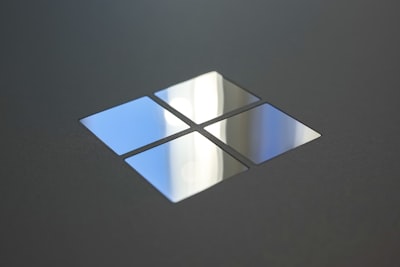Last Updated on November 10, 2023 by tech pappy
Do I need McAfee with Windows 10 and 11? You do not need to use McAfee or Norton to answer your question directly if you are running Windows 10.
Nevertheless, it is recommended that you do so nonetheless because there is no such thing as too much caution when protecting against viruses, malware, and ransomware assaults.
Does McAfee still protect you on Windows 10? Can you install McAfee on Windows 10 without getting it blocked by Microsoft?
Windows 10 launched in 2015, and, like other Microsoft operating systems, it has some built-in security features to help protect against threats.
Do I need McAfee with Windows 10?
Windows Defender, which comes pre-installed with Windows 10, is as good as any other antivirus. I’ve been using it since Windows 10’s beginnings and have never had any problems.
Security is a big concern for everyone who uses the internet, whether regular computer users or business owners. But the biggest worry isn’t that hackers are stealing personal data or sending viruses to your inbox; your PC is being infected with malware that steals credit card details or infects your network.
Windows Defender, built into Windows 10, protects against known malware and can also help stop new threats. To get the best protection for your device, visit Windows Defender in the Settings app.
With each major update, Microsoft is making security better. They have been working hard to eliminate vulnerabilities in Windows. This is why Microsoft created the new Windows Defender Application Guard.
Windows Defender Application Guard.
Windows Defender Application Guard is designed to protect Windows applications from attacks such as those used to steal data, gain access to sensitive information, or hijack the system.
McAfee and Microsoft collaborate to ensure consumers get the best possible security on Windows 10. Both are committed to making Windows 10 more secure.
However, both companies have different approaches to security. McAfee focuses on protection for existing applications, while Microsoft is developing new security capabilities for new applications.
How to Install McAfee on Windows 10?
If you still prefer to use McAfee instead of the free built-in version of Windows Defender, here are the steps.
- Using a web browser, navigate the McAfee website and review the system requirements for installing the McAfee Total Protection antivirus software on your Windows 10 machine.
- Go to the McAfee website after ensuring that your machine meets the McAfee antivirus software requirements.
- In the top-right corner of the home page, select Account, and then Sign In.
- Log in with your email address and password if you already have a McAfee account. Otherwise, establish a new account by filling out the necessary fields.
- After logging in, pick McAfee antivirus from the drop-down box under My Apps. Then, choose your operating system.
- Select the Download option.
- In the following window, tick the box to accept the McAfee license agreement and write down your product’s serial number, listed below.
- By clicking the Print button, you can also print or save it as a document on your computer.
- Now, on this page, click the Download option.
- The installer file will be downloaded to your PC.
- After downloading the installer file, run it and select the Install option.
- Ensure that your computer’s internet connection is stable during the installation procedure.
- Follow the on-screen instructions to finish installing the McAfee antivirus software on your Windows 10 machine.
- Last but not least, restart your computer.
Disadvantages of choosing McAfee over Windows defender.
- McAfee may cause your computer to slow down.
- Windows 10 does not necessitate the use of a third-party antivirus application.
- McAfee is not free. The free version you install will not help you remove any threats.
- McAfee does not have a lifetime license. You have to renew it every year, which can be costly.
- For example, a 1-year license for up to 10 devices may cost you over $44.99 for year number 1. Subsequent years are about three times that.
- If you want some additional import features, you must purchase them separately.
Microsoft Windows defender V.S. 3rd party Anti-Virus.
Many individuals who start seeking the best antivirus solution for Windows 10 are astonished to learn this. They already have an antivirus solution.
Windows Defender is sometimes dismissed as an out-of-season April Fool’s hoax. Windows Defender is rarely regarded as a true antivirus. Does it function without overburdening your computer to keep you safe?
Windows Defender is the first antivirus program that Windows users encounter because it is pre-installed with the operating system.

That implies it should be simple to use and understand, which it nearly always is, but one of the challenges I notice with newer customers is that they are not set up for ransomware protection. That requires a single drive, which a newbie may lack.
Another critical consideration is navigation. While the app’s settings are practically as simple to access as Total Antivirus or Kaspersky, Windows Defender gives users the Norton treatment.
Almost every option has a link to a separate settings window, and it’s very easy to get lost in there.
So, despite being the initial antivirus for most Windows users, Defender is far from simple to set up.
Windows defender security
For the most part, you’d expect Windows Defender to function effectively here. That is exactly what occurs.
There is fundamental protection implemented on all levels: a firewall protects against internet threats, malware, and spyware prevention.
All of that, plus, as previously said, only anti-ransomware techniques necessitate a OneDrive setup. Other features are enabled by default and can be customized further if necessary.
Nothing here deviates significantly from the big names in antivirus software for Windows 10, such as Norton Total AV or Kaspersky. That is, unless we take a deeper look at malware prevention.
Windows defender malware protection
The Defender window Less frequent updates are a minor security issue that affects Defender’s malware performance.
Because you don’t have access to knowledge regarding zero-day threats, forget about the fact that those iconic Windows upgrades have previously rendered Windows, Defender, and other programs ineffective or inactive.
Consider Norton 360 Deluxe and Kaspersky Total Security. They both include built-in VPN solutions that allow you to extend safety from your computer to the internet, including essentials such as online anonymity.
Windows Defender provides nothing, but the others include a password manager to safeguard all of your login information. Create strong, lengthy passwords for your most critical accounts as well.
Windows defender on computer resources
The window defender has nothing new, which is unexpected. Even when doing a complete scan, even though Window Defender is practically a component of Windows, it consumes a large portion of your computer’s resources.
Norton 360, on the other hand, has optimization technologies to ensure that when you run a scan, you won’t have to deal with a slowing computer and that you’ll have enough resources to accomplish even high-performance jobs. The same is true for Kaspersky.
I’ve performed deep scans alongside games and powerful applications, with almost no impact from the antivirus side during the rapid scan and background malware protection, with little effect on the system. Still, Windows Defender cannot match this performance.
Consider how it compares to other popular antivirus programs. People do not upgrade because of the greatest advantage of all. Windows Defender is free.
So, if you don’t keep any sensitive or critical information on your computer, Windows Defender will suffice.
FAQ (Frequently Asked Questions)
Is McAfee required with Windows 10?
Windows 10 is designed so that it has all the necessary security capabilities out of the box to protect you from cyber threats such as viruses. You will not require any other anti-malware software, including McAfee.
Should I keep McAfee Scan installed on my computer?
McAfee Security Scan is not an antivirus program. It is not an antivirus, and it does not protect your computer from anything. It will not even remove any malware that it finds. It’s a half-hearted pseudo-security solution meant to push McAfee products in front of your eyes.
Is McAfee superior to Windows 10 Defender?
McAfee achieved a better-advanced rating in multiple tests because of its protection rate and a low false-positive score. As a result of the previous tests, McAfee outperforms Windows Defender in malware protection.
Is Windows security enough?
According to AV-Test testing, it works quite well. Home Antivirus Testing: As of April 2020, Windows Defender’s performance for defense against zero-day malware attacks was above the industry average.
McAfee or Norton: which is superior?
Norton is superior in terms of overall speed, security, and performance. Go with Norton if you don’t mind spending a bit more to have the finest antivirus for Windows, Android, iOS, and Mac in 2021. McAfee provides coverage for more devices at a lower cost.
Are your free antivirus programs any good?
As a home user, free antivirus is an appealing alternative. When it comes to antivirus, the answer is usually no. It is uncommon for corporations to provide less protection in their free editions. Free antivirus protection is just as good as paid antivirus protection in most circumstances.
What makes McAfee so bad?
People dislike McAfee antivirus software because of its unfriendly user interface. Still, when it comes to virus protection, it works effectively and is appropriate to eradicate all new viruses from your P.C. It is so large that it slows down the computer. That’s the reason! Their customer service is atrocious.
Is it okay to uninstall McAfee from Windows 10?
Yes, uninstalling McAfee should reactivate Windows Defender, but I’ve heard stories that 3rd party software doesn’t clean up correctly, so using the removal tool (as suggested by
Is another antivirus necessary if I have Windows Defender?
The quick answer is that Microsoft’s packaged security solution is pretty good at most things. But, in the long run, it could do better—and you can still do better with a third-party antivirus app.
Due to the built-in security that the Windows Defender program offers, you typically don’t need any additional protection for your files if you’re using Windows 10.
However, if you’re concerned about the security of Windows Defender or if you think it’s insufficient, you may choose to install an additional layer of protection.
In terms of the finest antivirus software available, Norton and McAfee are among the top in the industry. Malware scanning and eradication, firewall protection, and anti-identity theft tools are just a few of the many capabilities.
There are a few solutions for those who don’t want to install a full-blown antivirus program on their Windows 10 system.


